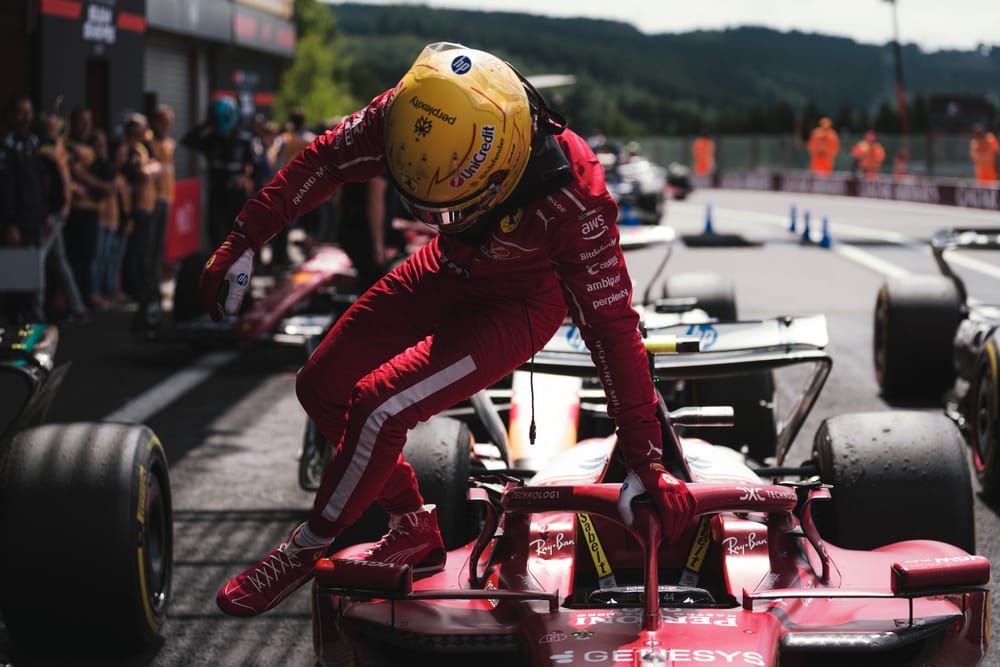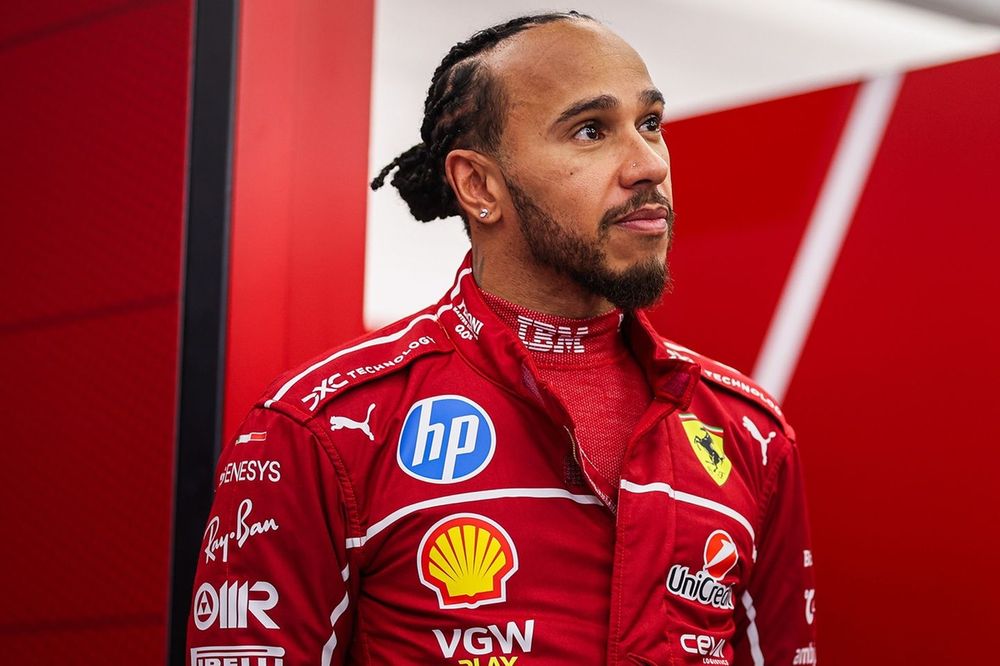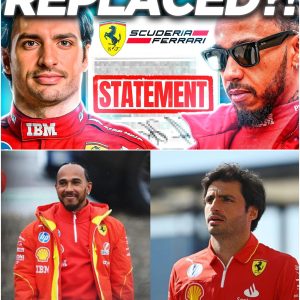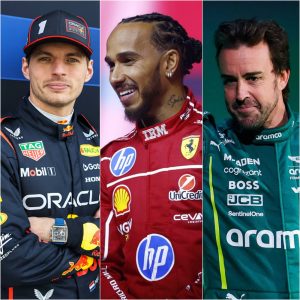The world of Formula 1 stood still when the news broke: Lewis Hamilton, the seven-time world champion and the titan of Mercedes, was making a seismic shift to join the legendary Scuderia Ferrari for the 2025 season.
It was a move whispered about for years, a dream pairing of the sport’s most successful driver and its most iconic team.
Fans envisioned immediate glory, a triumphant fusion of talent and legacy that would paint the racetrack red. But the reality, as the 2025 season has unfolded, has been a far more challenging and humbling experience than anyone, including those inside the Maranello factory, ever anticipated.

In a moment of startling honesty, Ferrari Team Principal Frederic Vasseur pulled back the curtain on the partnership’s difficult beginnings. He admitted that both he and the team had grossly underestimated the mountain Hamilton would have to climb after an unprecedented 18-year tenure within the Mercedes ecosystem. “We were stupidly expecting that he will have everything under control,” Vasseur confessed, a statement that sent ripples through the paddock. The admission was not an indictment of Hamilton’s skill, but a stark acknowledgment of the immense human and technical challenges involved in such a monumental transition.
The dream has been deferred, replaced by a gritty, day-to-day struggle for pace, comfort, and synergy. Hamilton, a driver who has spent over a decade fine-tuning a car and a team to his every preference, found himself a stranger in a strange land. The issues are not singular but a complex web of interconnected factors, starting with the very culture of his new home.
Ferrari isn’t just another team; it’s an institution, a national symbol in Italy with its own unique language, processes, and pressures. For Hamilton, who spent his entire career with British-based teams—first McLaren, then Mercedes—the move to Maranello represented a profound cultural shift. The rhythm of work, the communication style, and the sheer weight of expectation from the passionate Tifosi create an environment unlike any other. While a move to another British team would have been a change of scenery, this was a change of worlds. Vasseur himself highlighted this, noting the greater cultural leap compared to a hypothetical switch back to a team like McLaren.
Beyond the cultural acclimatization, there are the deep-seated working habits ingrained over nearly two decades. Hamilton’s longevity with Mercedes is unparalleled in the modern era. For twelve years, he was the central pillar of the Brackley-based squad, building a telepathic understanding with his engineers and mechanics. His input shaped the development of every car, his feedback was the gospel, and the team’s entire operation was molded around maximizing his potential. This created a highly efficient, symbiotic relationship that produced a staggering number of victories and championships.

Now, at Ferrari, he is the newcomer. He is adapting to the team, not the other way around. Drivers who hop between teams every few years develop a specific skill set for adaptation; they learn to quickly grasp new engineering philosophies, different communication protocols, and varying car characteristics. This is a muscle Hamilton has not had to exercise for more than a decade. The Ferrari has its own distinct DNA, its own quirks and behaviors that are fundamentally different from the Mercedes machines he knows so intimately.
The on-track results have reflected these teething problems. Moments of brilliance have been interspersed with frustrating qualifying sessions and races where Hamilton has seemed uncharacteristically out of sorts. He has been vocal about his struggles, particularly with the car’s braking system—a crucial area for any driver, but especially for a late-braker like Hamilton. His self-critical comments, however, are not a cause for alarm for his team boss. Vasseur sees this as a hallmark of the champion’s mindset. “This is a sign of his ultra-demanding nature,” Vasseur explained, framing Hamilton’s public frustration as the very quality that has propelled him to greatness. It’s this relentless pursuit of perfection that Ferrari intends to harness.
Behind the scenes, the integration process is in full swing, and there are glimmers of hope. The team is working methodically to bridge the gap. Vasseur indicated that a turning point seemed to come around the Canadian Grand Prix, where Hamilton began to find a better rhythm with the car and the team. The solution isn’t a single silver bullet but a painstaking process of addressing countless small, interconnected details. Adjustments are being made to the car’s setup, including the braking system, to better align with Hamilton’s driving style and preferences.
![Lewis Hamilton unsure he can replicate Fernando Alonso's debut Ferrari F1 win [Motorsportweek] : r/formula1](https://external-preview.redd.it/lewis-hamilton-unsure-he-can-replicate-fernando-alonsos-v0-G3Dzrd28qZLs_J-L67CujMp76nq75zdmT8Y-BVih12E.jpg?auto=webp&s=470311184509c7e4fcf98c9b3e310fad623fe39e)
The human element is also being bolstered. Ferrari has strategically recruited familiar faces from Hamilton’s past at Mercedes, bringing in personnel who already understand his methods and can act as a bridge between the driver and his new engineering team. This is a clear signal that Ferrari is not just waiting for Hamilton to adapt; they are actively reshaping parts of their process to accelerate his integration and unlock his full potential.
The strategy, Vasseur insists, is to remain calm. Panic is the enemy of progress in Formula 1. The team is systematically working through the issues, confident that their methodical approach will yield results. There is a shared understanding that this partnership was never just about 2025; it was a long-term play, with all eyes on the massive regulation reset coming in 2026. This technical overhaul will level the playing field, providing a clean slate for all teams and a golden opportunity for the Hamilton-Ferrari alliance to truly find its footing and build a championship-contending machine from the ground up.
For now, the journey is one of patience, perseverance, and adjustment. The initial, perhaps naive, expectation of instant success has been replaced by a more sober and realistic understanding of the task at hand. Lewis Hamilton faces one of the biggest challenges of his career: to reinvent himself one more time, to master a new machine and a new culture, and to lead the most storied team in Formula 1 back to the pinnacle of motorsport. The dream isn’t dead; it’s just proving to be a much harder climb than anyone ever imagined.





